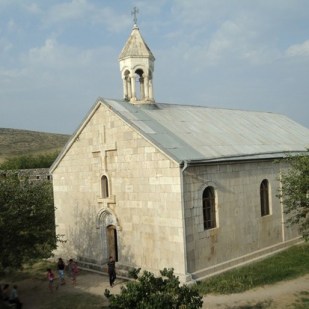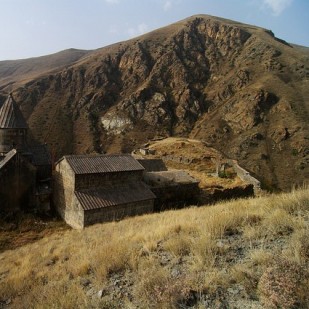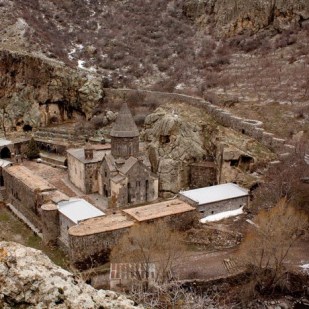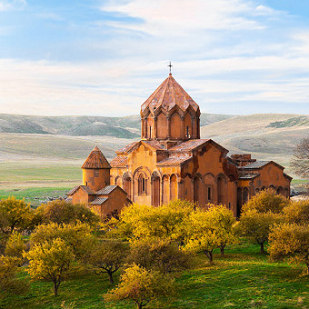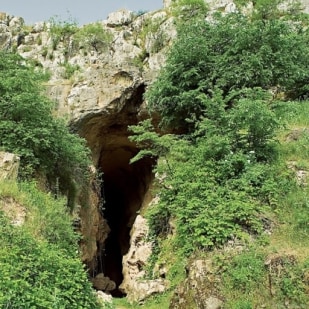Amaras Monastery
According to medieval chroniclers Faustus Byuzand and Movses Kaghankatvatsi, St. Gregory the Illuminator found the Amaras Monastery at the start of the fourth century.Amaras was the burial place of St. Gregory the Illuminator's grandson, St. Grigoris. A tomb built for his remains still survives under the apse of the nineteenth-century church of St. Grigoris.At the beginning of the fifth century ...
Read MoreVorotnavank Monastery
The main church of Surp Stepanos was built in 1000 by Queen Shahandukht, ruler of the lands of Syunik. Prior to the construction of the church stood a shrine to Saint Grigor Lusavorich. Four sacristies were placed at the southeastern end of S. Stepanos.The adjoining church of Surp Karapet was constructed in 1006-1007 by Queen Shahandukht's son Sevada. The structure has a ...
Read MoreGeghard Monastery
While the main chapel was built in 1215, the monastery complex was founded in the 4th century by Gregory the Illuminator at the site of a sacred spring inside a cave. The monastery had thus been originally named Ayrivank, meaning "the Monastery of the Cave". The name commonly used for the monastery today, Geghard, or more fully Geghardavank, meaning "the Monastery of the Spear", originates from ...
Read MoreMarmashen Monastery
Prince Vahram Pahlavuni is credited for building Marmashen churches. This information is known from the inscription left on the walls of the church. It was preserved till today.It is said that the name is the modified version of “Mariamashen.” Another village that is situated very close to the monastery is called Vahramaberd, probably in the honor of Prince Vahram Pahlavuni. This is why ...
Read MoreAzokh Cave
Discovered by "Paleolithic Archaeological Expedition" of Azerbaijan National Academy of Sciences under the leadership of Mammadali Huseynov in 1960. The cave is considered to be the site of one of the most ancient proto-human habitations in Eurasia. A Neanderthal-style jaw bone found in 1968 is thought to be over 300,000 years old and thus one of the oldest proto-human remains found in this part ...
Read More


